White Wood Aster
- September 25, 2023
- 0 comment

White Wood Aster, scientifically known as Eurybia divaricata, is a charming native wildflower that thrives in North America’s woodlands and meadows. This perennial plant typically grows between 1 and 3 feet in height and features delicate, daisy-like flowers with white petals and bright yellow centers. One of its defining characteristics is its ability to light up the shaded areas of woodlands, bringing a touch of elegance to the understory.
Its blooms appear from late summer to early fall, providing a valuable late-season nectar source for pollinators like bees and butterflies. Gardeners and nature enthusiasts appreciate White Wood Aster for its resilience, adaptability to various soil types, and its role in enhancing biodiversity in natural landscapes.
White Wood Aster, or Eurybia divaricata, is a versatile and adaptable native perennial found in the woodlands and meadows of North America. This plant stands out for its slender, branching stems adorned with delicate white flowers that resemble miniature daisies. These charming blooms emerge in late summer and continue into early fall, making it a valuable late-season food source for pollinators such as bees and butterflies. What makes White Wood Aster particularly appealing to gardeners is its ability to thrive in both shaded and partially shaded areas, making it an excellent choice for enhancing the beauty and ecological diversity of natural landscapes and gardens alike.
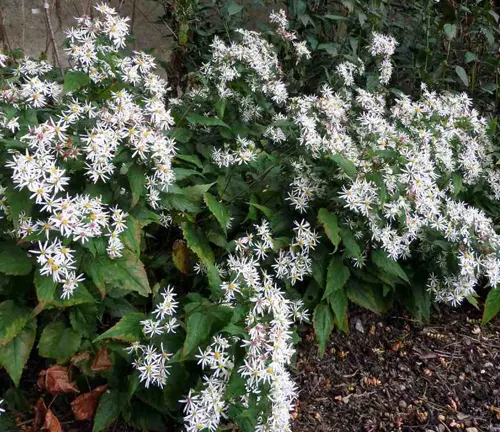
| Characteristic | Description |
| Scientific Name | Eurybia divaricata |
| Plant Type | Perennial herbaceous plant |
| Height | Typically 1 to 3 feet (30 to 90 centimeters) |
| Bloom Time | Late summer to early fall |
| Flower Color | White petals with yellow centers |
| Habitat | Woodlands, meadows, and forest understories |
| Sunlight | Partial shade to full shade |
| Soil Type | Well-drained soil; adaptable to various soil types |
| Drought Tolerance | Moderate |
| Growth Form | Slender, branching stems |
| Native Range | North America |
| Leaves | Lance-shaped or elliptical, toothed edges |
| Special Features | Shade tolerance, late-season blooming, native to North America |
| Ecological Value | Provides nectar for pollinators and supports local wildlife |
Getting to Know White Wood Aster
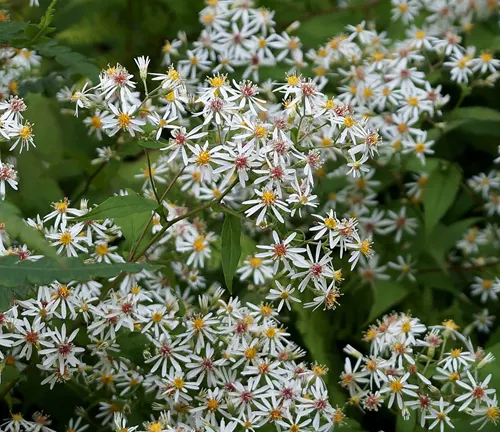
In the enchanting world of North American woodlands and meadows, the White Wood Aster (Eurybia divaricata) stands as a true botanical gem. This delicate yet resilient perennial herbaceous plant captivates nature enthusiasts and gardeners alike with its ethereal charm. As we embark on a journey to understand this woodland wonder, let’s uncover the beauty, ecological significance, and cultivation secrets of the White Wood Aster.
Woodland Elegance
Standing at a graceful height of 1 to 3 feet, the White Wood Aster graces the shaded corners of our natural landscapes with its slender, branching stems and exquisite white flowers. These daisy-like blooms, adorned with yellow centers, gently sway in the late summer to early fall breeze, casting an elegant spell over the surrounding scenery. The lance-shaped or elliptical leaves, with their toothed edges, complement the floral display, adding to the plant’s allure. Its ability to thrive in partial to full shade makes it an enchanting addition to woodland gardens, providing an understated yet captivating beauty.

Ecological Importance of White Wood Aster
Beyond its aesthetic appeal, the White Wood Aster plays a vital role in supporting local ecosystems. This native perennial serves as a beacon of hope for pollinators like bees and butterflies during the waning days of summer and early autumn. Its late-season blooms offer a rich source of nectar, sustaining these essential insects as they prepare for the colder months ahead. By planting White Wood Aster, we not only enhance the visual appeal of our gardens but also contribute to the well-being of our local wildlife.
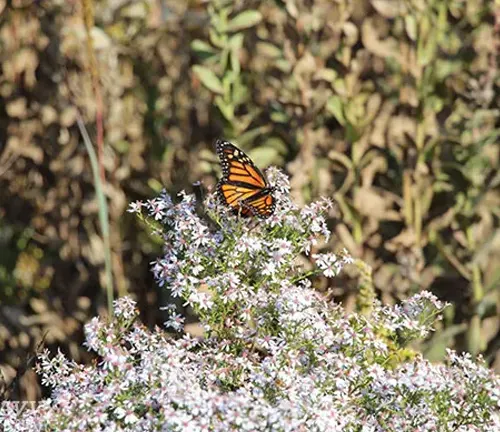
Cultivation and Conservation
Cultivating White Wood Aster is a rewarding endeavor, as it’s relatively low-maintenance once established. This plant thrives in well-drained soil and is adaptable to various soil types, making it a versatile choice for gardeners. Whether you’re looking to enhance the biodiversity of your garden or restore native habitats, White Wood Aster is a valuable addition. Conservation efforts should also be considered, as preserving this native beauty ensures that it continues to thrive in its natural environment.
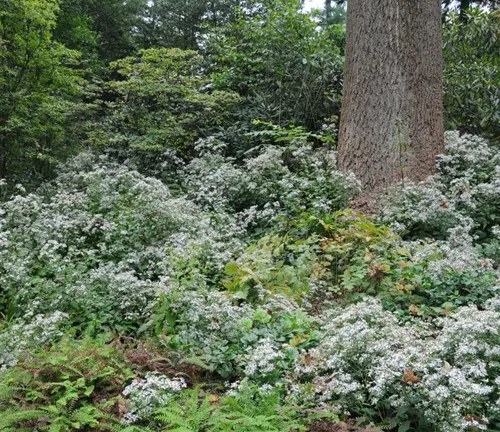
Fragrance
While White Wood Aster is primarily celebrated for its visual appeal, it also offers a subtle fragrance that adds to its woodland charm. The delicate scent, though not overpowering, evokes a sense of serenity, making it an inviting presence in any garden or natural setting. It’s a testament to the plant’s ability to engage multiple senses and create a truly immersive experience.
Soil Stabilization
White Wood Aster’s robust root system plays another crucial role in our ecosystems. Its roots help stabilize the soil, preventing erosion in woodland areas and meadows. By binding the soil together, this unassuming plant contributes to the overall health and stability of the environment it inhabits, making it an unsung hero in the fight against soil degradation.
Benefit Beyond Beauty
In conclusion, the White Wood Aster is not just a botanical beauty; it’s a symbol of ecological harmony and a valuable asset to our gardens and natural landscapes. Its late-season blooms attract pollinators, its fragrance soothes the senses, and its role in soil stabilization bolsters the environment. Whether you’re a gardener seeking to add elegance to your landscape or an advocate for preserving native flora, the White Wood Aster embodies the perfect blend of aesthetic grace and ecological importance. In this plant, we find a true testament to the wonder and interconnectedness of nature.


Different Species of Aster
New England Aster (Symphyotrichum novae-angliae)
This aster species is known for its vibrant purple or pink flowers and is native to eastern North America.
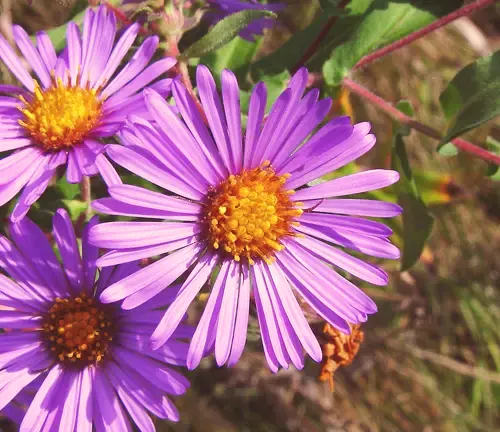
Smooth Aster (Symphyotrichum laeve)
Smooth Aster features small, pale lavender or blue flowers and is found across a wide range in North America.
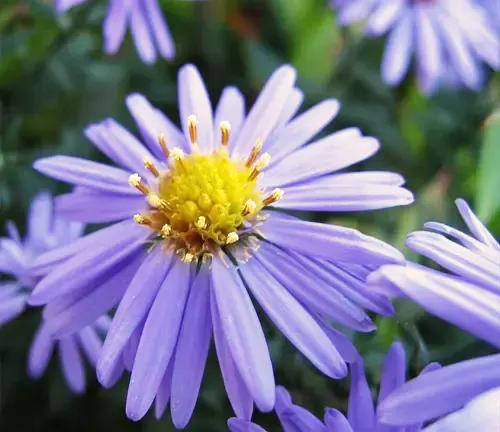
Heath Aster (Symphyotrichum ericoides)
Heath Aster has tiny, white to pale purple flowers and is typically found in dry, open areas.
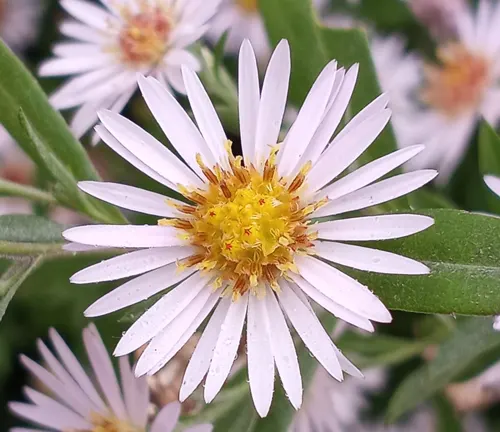
Sky Blue Aster (Symphyotrichum oolentangiense) This species is known for its light blue to lavender flowers and is native to the central and eastern United States.
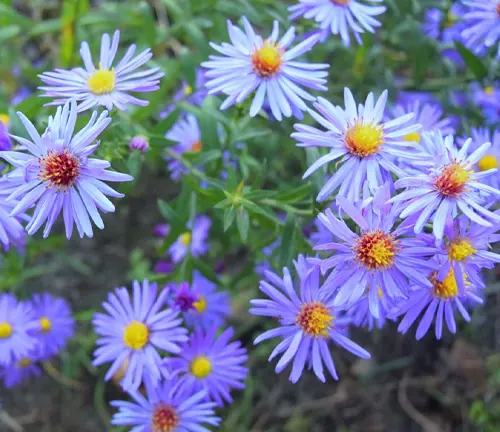
Calico Aster (Symphyotrichum lateriflorum) Calico Aster has white to pale pink flowers and is often found in moist woodlands and meadows.
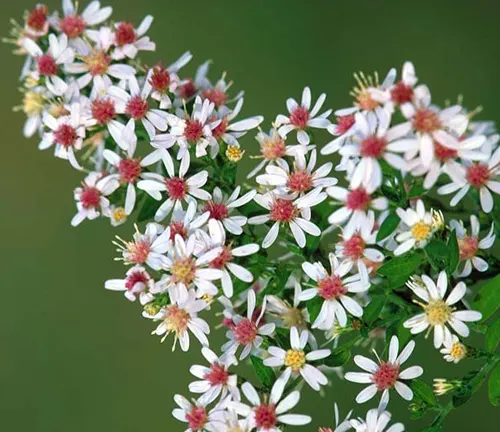
New York Aster (Symphyotrichum novi-belgii)
New York Aster comes in various colors, including purple, pink, and white, and is native to eastern North America.
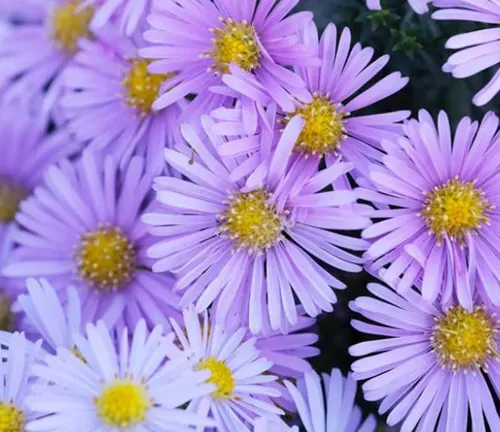
Frequently Asked Questions FAQs
- Does White Wood Aster Have Any Medicinal Uses?
White Wood Aster (Eurybia divaricata) has been traditionally used by some indigenous communities for its potential medicinal properties. It was used as an herbal remedy for conditions like digestive issues and skin ailments. However, it’s important to note that any medicinal use should be approached with caution and preferably under the guidance of a qualified herbalist or healthcare professional. - Can White Wood Aster Be Grown in Containers?
While White Wood Aster is typically grown in natural landscapes, it is possible to cultivate it in containers under certain conditions. Choose a large container with well-draining soil, and ensure the plant receives the right amount of shade. Container-grown White Wood Aster may require more attention to watering and soil moisture levels compared to those planted in the ground. - Are There Varieties of White Wood Aster with Different Flower Colors?
White Wood Aster is primarily known for its white petals and yellow centers. However, there have been instances of slight color variations in the wild, with some individuals displaying pale lavender or light blue hues. These variations are relatively rare, and the classic white variety is the most common. - Is White Wood Aster Prone to Any Pests or Diseases?
White Wood Aster is generally resilient and not highly susceptible to pests or diseases. However, like many plants, it can be affected by common garden pests such as aphids or powdery mildew under certain conditions. Regularly inspecting your plants and addressing any issues promptly can help maintain their health. - Can White Wood Aster Be Propagated from Cuttings?
Unlike some plants that readily propagate from cuttings, White Wood Aster is primarily propagated from seeds or division. Attempting to grow it from cuttings may not yield consistent results and is not a common method of propagation for this species.


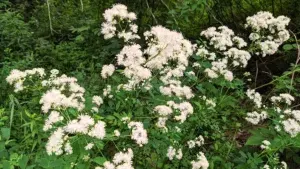
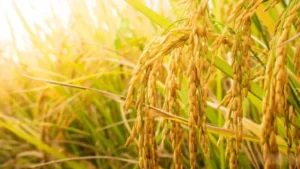
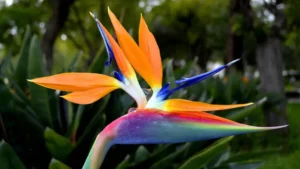
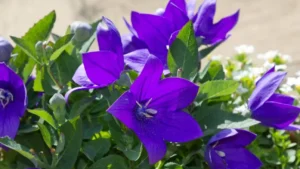
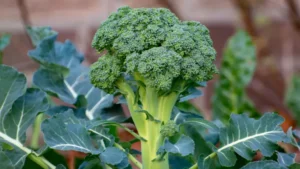

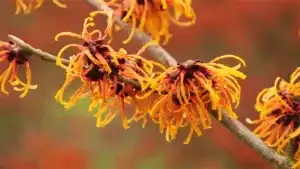

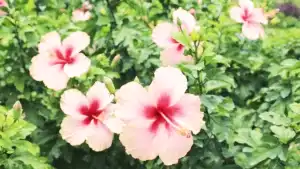
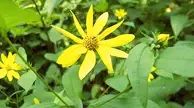
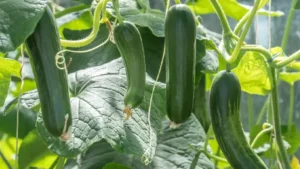
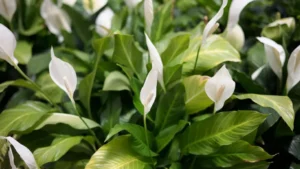
Leave your comment